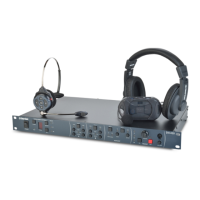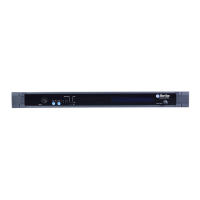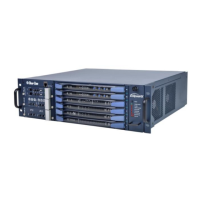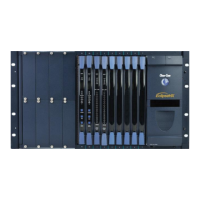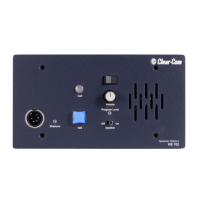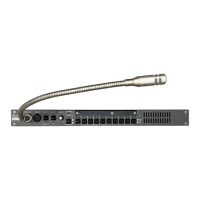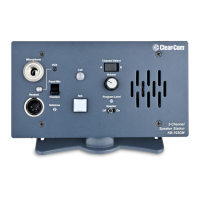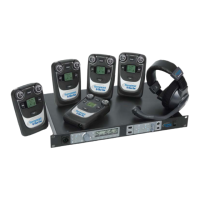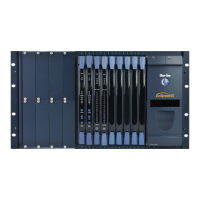HelixNet | User Guide
Powering the connection:
You must power the connection between the HMS-4X Main Station (HLI-2W2) and
the CCI-22 using either a dedicated power supply (such as the PK-7, PS-702, or PS-
704), or a powered Encore Main Station (such as the MS-702 or MS-704).
Tip: For more information about the PK-7 or PS-70x power supply devices from Clear-Com, see
http://www.clearcom.com/product/Partyline/power-supplies
Connecting the systems:
There are two parallel DB-9M Interface I/O connectors on the CCI-22. The two-wire
module on the HMS-4X Main Station features two 3-pin XLR connectors. For more
information about wiring the connection, see:
l Quick Reference: Two-Wire Connection to Eclipse on page 222
l The CCI-22 Manual.
3. Apply nulling to the connected Channel on the CCI-22. To null the Channel:
a. Insert the accessory earphone into the front-panel Test jack. A test tone, for all
frequencies, is produced every 0.5s.
b. While listening to the test tone, adjust the R (Resistance) control until the tone is at a
minimum.
c. Repeat Step b. for the L (Inductance) and C (Capacitance) controls. These controls
compensate for each component of the line’s impedance, providing the best possible null.
Because the R, L and C controls interact, you may have to adjust these controls
several times to minimize the test tone / achieve a deep null.
Note: The null circuit on the CCI-22 is effective on line lengths between 0 - 4000 feet
(1200m) with impedances in the range of 120 to 350 ohms. Nulling can reduce local
audio in the received signal by < 30 dB over the 200 Hz - 8 kHz frequency range.
Tip: For more information on the CCI-22 nulling circuit, see the CCI-22 Manual.
4. If necessary, adjust the In/Out level controls on the CCI-22 (Send and Recv, located on the
front panel next to the R, L and C nulling controls).
Note: The Send level control affects the level of the audio signals from the
Eclipse Matrix to the external party-line, and the Recv control affects the level of the
audio from the party-line into the matrix. The Send and Receive controls have a
range of ± 13 dB.
Page 223
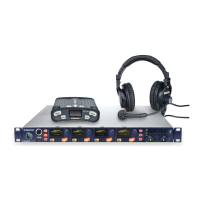
